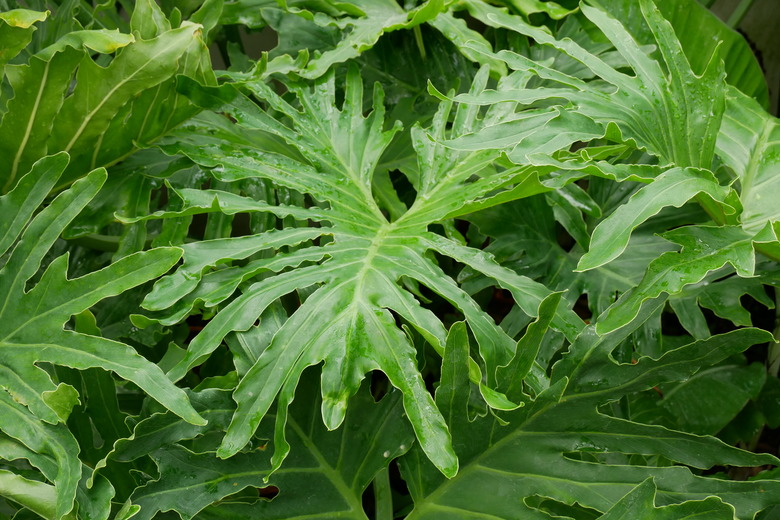How To Propagate Split-Leaf Philodendrons
We may receive a commission on purchases made from links.
Propagating split-leaf philodendrons is easy using seed, layering, or stem cuttings. The most difficult thing about split-leaf philodendron propagation might be making sure that you actually have this plant and not the one that it is frequently confused with: Monstera deliciosa. The split-leaf philodendron is an entirely different plant and genus: Thaumatophyllum bipinnatifidum. To confuse things further, it was previously classified under the Philodendron genus as Philodendron bipinnatifidum.
So there you have it. Assuming you have the right plant, get ready to propagate it. Propagation via stem cuttings is the most common method, although you can also use layering or seeds if the plant has produced them.
Propagate by Stem Cuttings
Propagate by Stem Cuttings
Because this plant's stems are very large and leafy, stem cuttings will also be heavy and leafy, so many experts recommend first putting them in water to develop roots rather than planting them directly in the soil because they will require staking if planted in a pot. In addition, they are susceptible to root rot when in a pot, and you also can't tell if they have developed roots.
Start in the spring or summer and choose a good, strong, healthy stem with at least two leaves. Cut off the stem below a leaf node and then place the cutting in a container of water that's tall enough to support the stem; a flower vase could work nicely. Keep the cutting warm at room temperature in indirect light and change the water weekly.
You might have to wait two months for roots to develop that are robust enough to allow transplanting into soil — at least 2 inches long. Plant your new cutting into a pot with well-drained soil.
Propagate by Layering
Propagate by Layering
Layering is simply the process of laying down an existing stem, covering it with a bit of soil, and allowing it to root. Choose a flexible stem that will bend without breaking and secure it to the soil using a rock, a wire peg, or some other device. Roots should form in a few months; at this time, cut off the new plant and transplant it into its own pot.
Propagate by Seed
Propagate by Seed
Propagation by seed depends on whether your plant's flowers have been pollinated and therefore developed seeds. You'll know because a flower will become blackened and crusty. If not, the flower will simply decay and drop off. A pollinated flower will develop fruit in midsummer in most areas. Once the fruit is soft, it is ripe enough to remove it and collect seed.
Cut open the fruit, remove the pulp, and clean the seeds. Commercial growers may use a pectinase enzyme product to break down the pectin in the pulp and help to remove it. Add the enzyme to water at a ratio directed on the product and soak the seeds two or three days before cleaning them. Remove them from the soak and place them in a mesh sieve. Then use a high-pressure stream of water to wash away the pulp. Spread out the seed to dry in a well-ventilated area and stir daily until completely dry.
Sow the seed in spring in a potting mix at a shallow depth. Water well and cover with a plastic bag until germination. Keep the seedlings at room temperature until they germinate. Remove the plastic bag. When each seedling has two sets of leaves, repot it into an individual pot.
